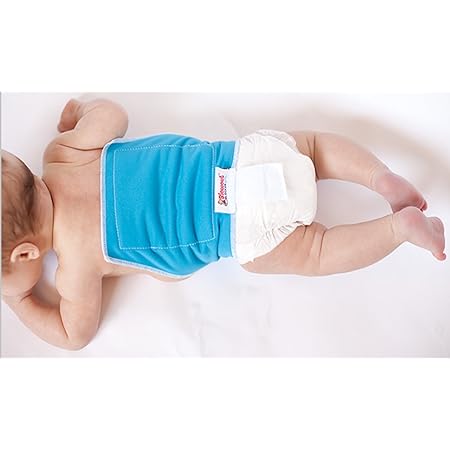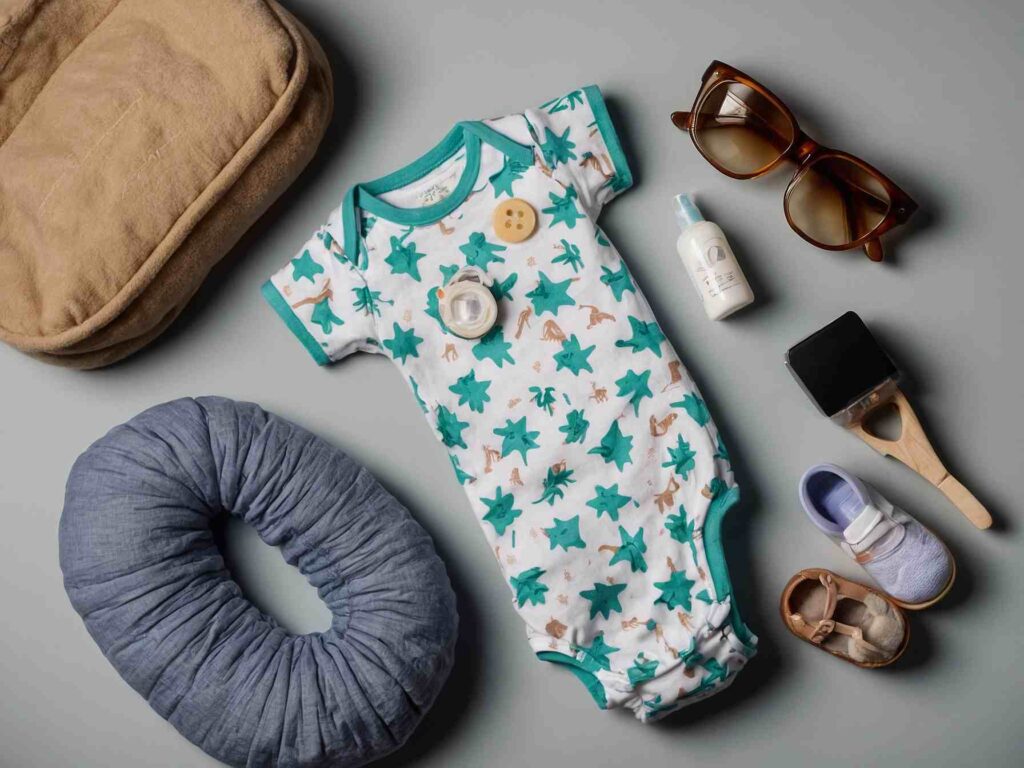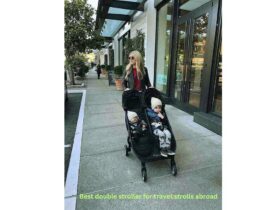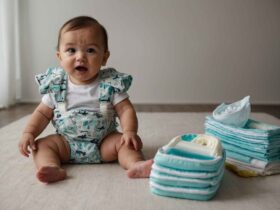To prevent diaper blowouts, ensure the diaper fits snugly and is the correct size for your baby. Always check that the waistband and leg elastics are secure, without gaps.
Diaper blowouts are a messy challenge that many parents face, often leading to frustration and extra laundry. Understanding how to thwart these messy situations can save time and keep your little one comfortable. Blowouts typically occur when a diaper is either too full or doesn’t fit properly, allowing contents to escape.
By choosing the right diaper size and ensuring a proper fit around your baby’s waist and legs, you can dramatically reduce the chance of unexpected leaks. Securing the diaper snugly, making regular changes, and considering absorbency are key steps in preventing diaper mishaps. With the right techniques and a bit of preparation, dealing with how to prevent diaper blowouts can become a rare occurrence in your parenting journey.
The Unpleasant Reality Of Diaper Blowouts
Diaper blowouts are a messy affair that can cause much distress to both the baby and parents alike. Characterized by an overflow of the contents of a diaper, these incidents often occur at the most inconvenient times.
Identifying Common Causes
- Incorrect diaper size: A diaper too large or small won’t contain messes properly.
- Poor fit around the legs and waist: Gaps can lead to leaks.
- Overfull diapers: Long intervals between changes increase blowout chances.
- Dietary changes: New foods may alter a baby’s digestion, affecting stool consistency.
- Brand type: Some diapers handle different consistencies better than others.
Effects On Baby’s Skin And Comfort
Baby’s skin is sensitive. Improper diapering can lead to discomfort and skin issues. Here’s what parents should know:
| Frequent Blowouts | Effects on Skin |
| Rashes: Harsh materials and long exposure to waste irritate the skin. | Moisture: A wet diaper environment can breed bacteria and fungi. |
| Chafing: Friction from materials can cause discomfort. | Sensitivity: Some babies may react to certain materials or chemicals in diapers. |
Ensuring the diaper fits well and is changed promptly helps maintain soft and healthy skin.
Proper Diaper Sizing: A First Line Of Defense
Ever experienced a diaper blowout? It’s not pleasant for parents or babies. Choosing the right diaper size is crucial in preventing these messy situations. It’s more than just comfort; it’s about performance and protection. Wearing the correct size of diaper forms a barrier against leaks and ensures your baby stays happy and dry.
Decoding Diaper Sizes
Diaper sizes can be confusing. They often come with a weight range, but these are just guidelines. Every baby is unique and might need a different size than what’s suggested for their weight. Consider your baby’s shape and movement level when picking a size. A snug fit without being too tight is what you’re aiming for.
Additional sizes can be listed here
| Size | Weight Range |
| Newborn | Up to 10 lbs |
| Size 1 | 8-14 lbs |
| Size 2 | 12-18 lbs |
Signs It’s Time To Size Up
- Red marks around your baby’s waist or thighs indicate a tight fit.
- If the diaper is hard to fasten, it’s time for a larger size.
- Increased leakage or blowouts suggest the current size can’t contain everything.
- Frequent blowouts also point towards a need for a size change.
“` The HTML snippet provided begins with a bold headline for the blog post section about proper diaper sizing. It starts with an introductory paragraph underlining the importance of selecting the right diaper size to prevent blowouts. It then breaks down the topic further by including two subsections represented by the H3 headings. The first section, ‘Decoding Diaper Sizes’, explains the general guidelines for diaper sizes according to the baby’s weight but stresses that the shape and movement should be considered for a good fit. A table is included to visually represent some example sizes and their corresponding weight ranges for better understanding. The next section, ‘Signs It’s Time to Size Up’, lists bullet points of indications that a baby may need a larger diaper size to prevent leaks and blowouts, thereby protecting the baby’s comfort. Throughout the content, important phrases are bolded for emphasis, ensuring the snippet is SEO-optimized and easy to comprehend.
Diaper Types And Fit: Choosing The Best Option
Diaper Types and Fit: Choosing the Best Option becomes essential in the everyday life of parents. A well-fitting diaper can be the difference between a peaceful day and a messy one. Not all diapers are created equal, and sometimes the key to preventing blowouts lies in understanding the differences and ensuring a snug fit.
Differences Between Cloth And Disposable Diapers
Parents often choose between cloth and disposable diapers based on convenience and personal preference. Cloth diapers are reusable, eco-friendly, and can be more economical in the long run. They come in various sizes, with adjustable snaps or Velcro to grow with your baby. Disposable diapers, on the other hand, offer the convenience of one-time use. They have absorbent chemicals that turn liquid into gel, helping keep your baby’s skin dry.
- Cloth Diapers: Eco-friendly, reusable, adjustable fit, require washing.
- Disposable Diapers: Convenient, super-absorbent, various sizes, no washing.
Adjusting Fit For Maximum Containment
Ensuring a proper fit is crucial in preventing diaper blowouts. A diaper too big can lead to gaps where leaks can occur, while a too-tight diaper can cause overflow.

| Diaper Size | Weight Range | Fitting Tips |
| Newborn | Up to 10 lbs | Snug around waist and thighs |
| Size 1 | 8-14 lbs | Check for snugness and leg cuffs |
| Size 2 | 12-18 lbs | Adjust the waistband and leg cuffs |
For both diaper types, ensure the leg cuffs are out and not tucked in to prevent side leaks. The waistband should be comfortable, sitting just under the belly button. Recheck the fit after your baby moves to secure gaps that may form. Keep in mind growth spurts can change their size needs quickly, so be prepared to adjust frequently.
- Check the waistband for snugness.
- Ensure the leg cuffs are not tucked in.
- Re-adjust after baby moves.
- Monitor baby’s growth and update size as needed.
Understanding Baby’s Diet And Its Role
Diaper blowouts can be a messy part of parenting. What your baby eats plays a key role in this. The food that goes into your baby’s tummy affects what comes out. A proper diet can help in preventing those unexpected explosions. Knowing what to feed your baby and in what amounts can make a difference. Let’s dive into the diet specifics to help keep those diapers in check.
Foods That May Increase Blowout Risks
Some foods can make stools softer and more prone to blowouts. Let’s look at them:
- High-fiber fruits: such as pears and prunes
- Dairy products: for lactose-sensitive tummies
- like fried treats
- avoid these entirely for babies
Keep track of what causes issues for your baby.
Adjusting Feeding Times And Quantities
To lower the risk of blowouts, try these:
- Smaller, more frequent feedings: This can help with digestion.
- Avoid feedings right before naps: Give their tummy time to settle.
- Observe and adjust: Notice how different amounts affect your baby.
Every baby is different. Find the feeding rhythm that suits yours.
Changing Techniques To Minimize Risks
Parents know that diaper blowouts can be a messy challenge. The right changing techniques are key to reducing these little accidents. Read on for expert tips to keep your baby dry and happy.
The Importance Of Frequent Changes
Diapers need regular checking. Quick changes keep babies dry. This lessens blowout chances. Try these steps:
- Check the diaper every two hours.
- Look for signs of fullness or discomfort.
- Change before or after feedings and naps.
Ensuring A Secure Diaper Fit Every Time
A well-fitted diaper stops messes. Follow these pointers for the perfect fit:
- Start with the right diaper size. Check weight guidelines.
- Adjust the waistband. It should be snug, not too tight.
- Secure the tabs evenly on both sides.
- Ensure leg cuffs wrap neatly around thighs.
Helpful visuals:
| Diaper Size | Baby’s Weight | Fit Check |
| Newborn | Up to 10 lbs | High waist, snug tabs |
| Size 1 | 8-14 lbs | Rounded leg cuffs, secure fit |
| Size 2 | 12-18 lbs | Even tabs, no gaps |
Boosting Blowout Protection With Diaper Accessories
Diaper blowouts can be messy and frustrating. Fortunately, a few smart accessories can make all the difference. Diaper liners, inserts, and covers offer extra layers of protection. These simple solutions can keep your baby comfortable and blowouts at bay.
Diaper Liners And Inserts
Diaper liners and inserts work miracles for containing messes. Soft liners add a protective layer. They make cleanup easier and faster. Inserts increase absorbency, reducing the chance of leaks. Try these quick tips:
- Choose the right size for a snug fit.
- Place the liner inside the diaper, close to baby’s bottom.
- Opt for biodegradable liners for an eco-friendly choice.
| Feature | Diaper Liner | Diaper Insert |
| Use | Single | Reusable |
| Material | Soft fabric | High-absorbency material |
| Benefit | Easy cleanup | Extra absorbency |
The Role Of Diaper Covers

Diaper covers add an extra line of defense against blowouts. They fit over cloth diapers or disposables. Here’s how they help:
- Diaper covers trap leaks with their waterproof exterior.
- Adjustable snaps ensure a perfect fit, reducing gaps.
- Covers come in various materials and styles for any outfit.
Invest in quality diaper covers for the best protection. Remember, the right fit is key. Check often and adjust as your baby grows.
On-the-go Strategies To Prevent Public Incidents
Diaper blowouts come without warning, especially inconvenient during trips and public outings. But fear not! Armed with efficient on-the-go strategies, parents can spare themselves the panic and mess. These tactics are lifesavers, ensuring the little ones stay comfy, and clothing remains clean.
Packing The Right Supplies
Before heading out, make sure to pack a diaper blowout emergency kit. Picture this: You’re in the middle of a crowded park when disaster strikes. Your kit will be your best friend!
- Extra diapers – Pack more than you think you’ll need.
- Scented diaper disposal bags – Keeps unpleasant odors contained.
- Portable changing pad – Hygiene is key, anywhere, anytime.
- Wet wipes – For the messiest of messes.
- Change of clothes – Quick swaps to avoid prolonged discomfort.
- Hand sanitizer – Keeps germs at bay after the clean-up.
Quick-change Tricks
Timing is everything when it comes to preventing diaper disasters during outings. Always change the diaper before leaving home. But what if a blowout still happens?
- Locate the nearest family restroom or private area.
- Lay out the portable changing pad for a clean surface.
- Swiftly remove the soiled clothes and diaper.
- Use wet wipes to clean up the mess thoroughly.
- Place the dirty diaper and clothes in scented disposal bags.
- Sanitize your hands, then dress your little one in a fresh outfit.
The keys to success are preparation and speed. With these quick-change tricks, parents can tackle diaper blowouts swiftly and continue their day with ease.
Creating A Blowout Backup Plan
Every parent fears the dreaded diaper blowout. Yet, it’s a natural part of the parenting journey. A blowout backup plan saves the day when you’re out and about. Be prepared with a trusty blowout kit and some quick clean-up tips.
Assembling A Blowout Kit
Stay ready for those messy moments with a blowout kit. It’s your first line of defense.

- Extra diapers: Always pack more than you think you’ll need.
- Wipes: A generous supply ensures a thorough cleanup.
- Disposable bags: Seal away the mess instantly.
- Change of clothes: Keep baby comfy with a fresh outfit.
- Hand sanitizer: Keep those germs at bay on the go.
Emergency Clean-up Tips
When a blowout happens, efficiency is key. Follow these clean-up tips to handle the mess swiftly:
- Stay calm: Your baby will sense your stress, so take a breath.
- Quick containment: Use wipes to remove excess mess.
- Bag the evidence: Place soiled items into disposable bags.
- Freshen up: Apply a new diaper and clean clothes.
- Sanitize: Wash your hands or use hand sanitizer.
Learning From Experience: Parental Tips And Anecdotes
As any seasoned parent knows, diaper blowouts are a messy inevitability of child-rearing. Yet, through trials and heaps of soiled onesies, wisdom emerges. This section of our blog offers golden nuggets of advice directly from parents who’ve been in the trenches. They share their mishaps and ingenious solutions, providing a playbook for new parents navigating the messy world of diapers.
Real-life Blowout Stories
Every parent has a tale to tell, and these real-life stories highlight the unpredictability of diaper disasters. They provide solidarity and, occasionally, a good laugh to help you through.
- One mom recounts a blowout happening mid-flight. Her quick thinking led to an impromptu sink bath in the airplane lavatory.
- A dad recalls being ill-prepared at a park. He made an emergency diaper from a T-shirt and raced home.
Creative Solutions From Parents
The best tips often come from moments of desperation. Here’s how some parents tackled the worst blowouts with creativity:
| Problem | Creative Solution |
| Diaper too loose | Use a smaller size for naps and bedtime |
| Up-the-back blowouts | A DIY onesie extension to tuck the diaper in place |
- Never skip the leg ruffles – these are crucial barriers.
- Consider a diaper with a higher back waistband.
When To Seek Professional Advice
Diaper blowouts can be a messy challenge for any parent. Yet, they may also hint at underlying health concerns. Crucial to your child’s well-being is knowing when expert guidance is necessary. What follows is a closer look at those times when a professional’s advice becomes pivotal.
Recognizing Signs Of Digestive Issues
Not every diaper mishap signals distress, but certain cues should not go ignored. Pay strict attention to these telltale signs:
- Frequent blowouts: More than usual occurrences can imply a concern.
- Changes in color and consistency: Marked shifts may signal digestive issues.
- Discomfort or pain: If your baby seems uneasy or cries during bowel movements, take note.
- Modified appetite: A sudden dislike or increase in intake warrants attention.
Consulting Your Pediatrician
Taking action at the right time can safeguard your infant’s health. Consult your pediatrician promptly when:
- Baby shows ongoing signs of digestive trouble mentioned above.
- Ongoing blowouts resist all preventive measures.
- You notice symptoms of dehydration, such as fewer wet diapers.
- There’s persistent vomiting or a fever accompanying the blowouts.
A pediatric visit can unravel the mystery behind the messy diapers. Your doctor may recommend dietary adjustments, probiotics, or further investigation. Professional input ensures your peace of mind and your baby’s optimal health.
Frequently Asked Questions On How To Prevent Diaper Blowouts
What Causes Diaper Blowouts?
Diaper blowouts often occur when a diaper is too full, improperly fitted, or the wrong size for your baby, leading to leaks and messes.
How To Choose The Right Diaper Size?
Selecting the right diaper size involves checking the weight range on the package and ensuring it snugly fits around your baby’s waist and thighs.
Can Diaper Blowouts Indicate A Health Issue?
Frequent diaper blowouts aren’t typically a health concern but can signal that it’s time to move up a size or change diaper brands for better fit.
What Are The Best Diaper Brands To Prevent Blowouts?
While brand preference varies, parents often choose brands with high absorbency and a good reputation for a secure, snug fit to prevent blowouts.
How To Secure The Diaper To Prevent Leaks?
To secure a diaper effectively, ensure the waistband is snug, the leg cuffs are pulled out, and the diaper tabs are fastened evenly on both sides.
Conclusion
Navigating the messy adventures of parenthood becomes a tad easier with these tips. By choosing the right diaper size, ensuring proper fastening, and considering a blowout blocker, you’re set for success. Remember, regular checks and a well-packed diaper bag are your best allies against unexpected messes. Embrace the journey—one diaper change at a time.












I love what you guys are usually up too. This sort of clever work and coverage!
Keep up the great works guys I’ve incorporated you guys to our blogroll.
Whoa! This blog looks exactly like my old one!
It’s on a completely different subject but it has pretty much the same page layout and
design. Great choice of colors!